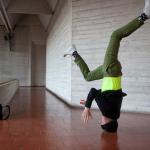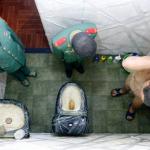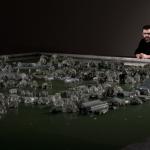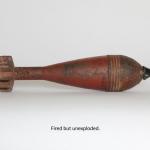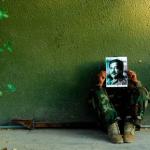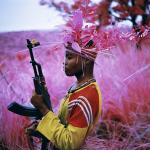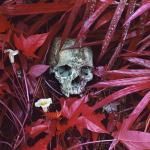ελληνικά
The 55th Venice Biennale opened its doors on the first of June, and - for those who did not manage to visit it during the summer months - it will remain open to the public until the 24th of November, 2013.
Anyone who has been to Venice during the Biennale, knows very well that you need to run lots of miles in the cobbled alleys to visit all national pavilions, the parallel exhibitions and the numerous cultural events taking place in the city of the Doges; from the Giardini to the Arsenale, the scattered buildings of the city and the islands hosting art exhibitions.
Predominantly ethnocentric the structure of the Biennale could be likened to the world-system theory of the social scientist Immanuel Wallerstein. This correlation is not random since the Biennale constitutes a micrography of our planet and of its political balances. Following a nuclear structure, the rich countries are in the city centre whilst the poorest ones are in the periphery or even ostracised to the smaller islands of the Laguna, where the building rental rates are much lower.
This year's exhibition consists of 88 national participations, with for the first time bringing the inclusion of: Angola, the Bahamas, the Kingdom of Bahrain, Le Côte d' Ivoire, the Republic of Kosovo, Kuwait, Maldives, Paraguay, Tuvalu, and the Holy See (Vatican).
It is common knowledge that cultural activities do not take place in vacuum. Artistic creation corresponds to specific socio-political stimuli and in turn triggers debate and creates new spaces of interpretation. In times of crisis this dialectic takes new and more compelling forms. Artistic practices reflect and transform these anxieties, the frustration and even the anger of the social subjects, stimulating further discussion and reflection. The Venice Biennale is no exception to the rule. Besides, from the 60s onwards, the Biennale has never tried to hide its political character.
The Franco-German axis, to mark the 50th anniversary of the Elysee Treaty established by Charles de Gaulle and Adenauer - and apparently having the power to negotiate nationalisms - has proceeded on a gesture of multiple significations; the trade of their national pavilions. According to Susanne Gaensheimer, curator of the German pavilion the exhibitions of both pavilions ‘offer an alternative narrative to the ethnocentric approach of the Biennale’. Whilst Christine Macel, the curator of the French pavilion, added that the project, ‘in the form of social narratives, aims to highlight the multinational and transnational nature of artistic expression’.
France, in particular, presents the Franco-Albanian artist Anri Sala and his installation of audio and video recordings of a piano ‘concerto in D for the left hand’ by the French composer Maurice Ravel. The exhibition is entitled Ravel Unravel. The name of the work is a subtle play on the words that is based on the verb ‘ravel’, in conjunction with its opposite ‘unravel’, which purposefully also references the famous composer ‘Ravel’ whose music is at the centre of it all. With this choice France is mainly focusing on artistic practice and expression without proceeding to further actions of political symbolism.
In contrast for Germany the trade of pavilions itself seemed barely adequate. Artists from four different countries were invited to present their work. The selection of participants’ nationality gives plenty of food for thought considering that the invited artists are: the French-Iranian filmmaker Romuald Karmakar, the South African photographer Santu Mofokeng, the Indian photographer Dayanita Singh and Chinese dissident artist Ai Weiwei. More specifically, one could say that it gives the impression that Germany suffers from a form of guilt complex for the axis’s colonial policies of the 17th-20th century and consequently raises questions regarding the neo-colonial capitalist policies of the 21st century. The reviews and comments during the inauguration of the Biennale were divided since a large part of the public interpreted this choice as a political recognition of the past’s fallacies, while others suggested that Germany would have seem more honest if it had included artists representing the countries of the european South, such as Greece, Spain, Portugal, Italy and Cyprus.
It should be noted here that Ai Weiwei himself was unable to attend the Biennale as the Chinese authorities denied him the provision of a visa but this restriction failed to preventing him having two solo exhibitions seizing once more the opportunity to demonstrate his political battle against the Chinese government. With his hyper-realistic installation in the church of St. Anthony, entitled SACRED, Weiwei presents the strict surveillance he was under during the period (81 days) of his imprisonment in China, 2011. The exhibition was visited by the artist’s 80 year old mother, who for the first time, saw how her son lived whilst in prison. Visitors praised the political activism of Weiwei, whilst others, criticised him for manipulating and commercialising ideologies and political conflicts for his own economic benefit.
The winner of the Turner Prize in 2004, Jeremy Deller, represents Great Britain with his work English Magic spanning 6 rooms. The exhibition, maintaining elements of self-criticism and self-sarcasm, highlights the idiosyncratic features of the British society. The dominating character of the exhibition is one of the rarest birds of prey in Great Britain, the hen harrier (Circus Cyaneus). A bird of the species was shot in 2007 by Prince Harry who was questioned by the police for his brutal and illegal act. Eventually no charges were filed against the reckless young prince as the carcass of the bird was never found. The painting in the main hall of the building depicts a giant hen harrier taking revenge, by grabbing a passing Range Rover with its claws. Deller, stated that for him, the hen harrier is ‘another victim of capitalism and wealth’. The most interesting part of the pavilion is room number 3. Deller acts here mainly as an art historian, rather than an artist, since for the needs of the show he researches, collects and curates the exhibition. Shocking drawings made by former English soldiers who served in Iraq and Afghanistan depicting day-to-day army life are hung one after another in a completely frank dialogue revealing pain and horror. Made by uneducated amateur soldiers the drawings are impossible to ignore or leave, even the most demanding spectator, unmoved.
Iraq, on its second participation in the exhibition, commissions 11 artists who use a variety of media (photography, drawing, video, painting, sculpture and installations) to express the daily oppression of the Saddam Hussein regime on the Iraqi and Kurdish populations of the region.
Bosnia and Herzegovina, striving to heal the wounds of the war, and inspired by the homonymous triptych by Hieronymous Bosh, presents the Garden of Delights. The aim of the artist Mladen Miljanovic, a former sculptor of funerary plaques, as he stated, is not ‘to take advantage of the recent trauma and present the pathetic side of Bosnia’, but ‘to focus on the positive aspects of reconstructing memory and the construction of collective identity.’.
Richard Mosse, represents Ireland by presenting a war that has long been forgotten by the public. His work, The Enclave, probably the best of this year's Biennale, depicts the African tragedy of the Democratic Republic of Congo. Since 1998, more than 5.4 million people have lost their lives of war-related causes in eastern Congo. A long-standing power vacuum has resulted in a horrifying cycle of violence where armed rebel groups frequently set ambushes, massacre and sexualy abuse mainly unarmed population. For the shots, Mosse collaborated with filmmaker Trevor Tweeten, who used a 16mm film designed by the military for camouflage detection. The resulting imaginery is breathtaking. The jungle war zone turns into a psychedelic landscape of vivid magenta, lavendar, cobalt and violet shades. The amazing landscape hides camouflaged violence. The ambient audio background composition by composer Ben Frost, comprised entirely of organic Congolese field recordings, penetrates into every single cell of the spectator, making them part of the unfolding tragedy. Feelings and thoughts are mixed and in a constant conflict. How can such deep human suffering be presented so beautifully? Mosse’s work employs exolinguistic means to give voice to a humanitarian crisis, whilst at the same time provides a compelling new way of ‘seeing’. It demonstrates the power of contemporary art to manifest the pathologies of our era without patronising or interfering.
Zsolt Asztalos represents Hungary with an exhibition about a bomb that has been detonated but never exploded. The video installation tells the story of the defective object, that was created to destroy but failed in its mission. This failure transforms the nature of the object converting it to archival material that chronicles human conflicts. The purpose of the artist is to represent conflicting situations open to simultaneous interpretations on personal, local, national and global levels.
Turkey, with 16 parallel video projections by Ali Kazma, declares Resistance. The videos record various acts, from tattooing to brain surgery, as part of Kazma’s study on the endurance of the human body and its reaction to several types of mutation and social pressures. ‘The body finds ways to escape when subjected to violence’ says Kazma, ‘but in order to see what it reacts to you should first see where this pressure comes from.’
Represented by Stefanos Tsivopoulos and his work History Zero, Greece, focuses on the financial strains. The exhibition is curated by Syrago Tsiara, Director of the Centre of Contemporary Art of Thessaloniki. The overall work projects three parallel cinematic stories which expose the multilayered crisis that plagues Greece. Each story depicts experiences related to a variety of perceptions regarding the value of money. Questioning the value of money and the role money plays in the formation of human relationships as well as the socio-political dimensions of its possession. The exhibition is accompanied by archival material which cites multiple examples of alternative, non-monetary exchange systems, challenging the dominance of a single currency.
Russia, also focused on money, by entrusting the curating of its pavilion to the German Udo Kittelmann, honouring the newly formed Russian-German friendship. Kittelmann reciprocated the praise, by commissioning the Russian artist Vadim Zakharov. Zakharov, like many other great artists including Rembrandt, Titian and Tintoretto, got inspired by the ancient Greek myth of Danaë. Zeus fell in love with Danaë. His deep desire to conquer her led him to transform into golden rain in order to penetrate the steel basement that she was imprisoned in. The spawn of their love was the mythical Perseus. In a contemporary hermeneutical framework, which cauterizes - apparently in not a very successful manner - gender inequalities, rain of golden coins falls from the pyramidal ceiling of the two storey building following the anatomical construction of the myth. The first floor is only accessible to men. The lower hall, which is configured as a ‘cavernous womb’ can only be visited by women. Protected by holding umbrellas in hand, they are invited to collect the golden coins. The words written on the wall: Greed, Cynicism, Robbery, Speculation, Wastefulness, Gluttony, Seduction, act as an allegory of the human lust, greed and corruption that money can bring.
Cyprus, amid economic crisis, established a cultural alliance with Lithuania. The title of the exhibition Oo seeks to highlight the asymmetry of both space and relationships. The Lithuanian curator Raimundas Malašauskas chose a concrete building as the exhibition’s venue - the Municipal Sports Centre of Venice located in the Arsenale. This option aspires to demonstrate the economic asymmetry between the participating countries, by creating a comparison to Venice’s palazzos and opulence. The selected artists from Cyprus’ side are Natalie Yiaxi, Fanos Kyriakou, Constantinos Taliotis, Lia Charaki and Maria Chasapi, while Lithuania is represented by Liudvikas Buklys, Gintaras Didžiapetris, Jason Dodge, Myriam Lefkowitz, Gabriel Lester, Elena Narbutaitė, Morten Norbye Halvorsen, Algirdas Šeškus, Dexter Sinister, Kazys Varnelis, Vytautė Žilinskaitė. The exhibition consists of objects, installations, video projections, texts and successive art performances, that raise several questions that challenge the limits of visitors’ perception. There is a strong emphasis given on peaceful coexistence rather than alienation. The exhibited subjects and objects maintain their individual characteristics of difference whilst at the same time coexist in perfect harmony.
The pavilion of the Maldives at the Gervasuti Foundation, with the participation of Achilles Kentonis and Maria Papacharalambous, amongst others, focuses on the concept of Contemporary Environmental Romanticism in relation to the nature and culture of the Maldives, with nature being interpreted as a source of aesthetic experience. The disappearance of the islands on the map is predestined. The exhibition’s title is revealing, Portable Nation: Disappearance as Work in Progress - expressing environmental concerns dealing with the meaning of existence and extinction as a result of the mechanisms of the global economic system.
Chile opts to drown the Giardini itself. This is the fourth participation of the artist Alfredo Jaar at the Venice Biennale, with the first being back in 1968. All those years of visiting the international exhibition the same question comes to Jaar’s mind; as he pointed out: ‘why the Biennale still only includes 28 national pavilions in the Giardini, when there are more than 160 participating countries?’, and ‘why is there no African country represented in the Giardini?’. Therefore, when he got invited to represent Chile this year, he took the opportunity to shout: ‘The system is totally obsolete. We have to change it. The world has changed. Hey, wake up!’. In order to visualize the message he made a replica out of gray synthetic resin of the Giardini at a 1:60 scale. The Giardini submerges and re-emerges. The pavilions and their archaic rigidity dissolving into the flowing depths of water seek to symbolically abolish a legacy of world hierarchy, in the hope that a regenerated Biennale and a more democratic global system will emerge from the abyss.
The participation of the Vatican in this year's Biennale is of historical significance. Having often condemned contemporary art as blasphemous, the Vatican recently changed policy. It diplomatically recognised the power of art as a means to communicate with the world and used it to do so. Based on the first 11 chapters of Genesis and located in the Arsenale, next to the argentinian pavilion, the exhibition of the Vatican is divided into three main themes. Creation, Un-creation and Re-creation (or the new Man). The first theme has been commissioned by the Italian collective Studio Azzuro in Milan which is famous for its large interactive video installations that usually disrupt the barrier of space between the viewer and the artwork. This setup includes images from deaf and incarcerated women who tell their family stories. The Czech photographer Josef Koudelka, addressing the theme of destruction, presents 18 large-format black and white photographs that explore exile and material destruction deriving from the loss of ethical meaning. The Australian-Irish artist Lawrence Carroll, influenced by the post-war movement Arte Povera, presents five abstract paintings that represent the Re-creation.
In 1955, the self-taught Italian artist Marino Auriti designed a model museum, which he named Il Palazzo Enciclopedico (The Encyclopedic Palace), envisioning it as the home that will host all human knowledge. Auriti intended to construct a building of 700 metres high and with 136 stories in Washington DC but his ambitious vision never got materialised. Massimiliano Gioni - curator of the 55th Biennale, paying tribute to Auriti’s utopia managed to create an exhibition that represents the art of the last century and constitutes a single entity with works by 150 artists from 37 different countries. As explained by the President of the Biennale, Paolo Baratta, Gioni’s objective ‘is much more than presenting us with a list of contemporary artists, (he) wishes to reflect on their creative urges and seems to push the question even further: what is the artist’s world? ...which are the stimuli to imagine and dream beyond reality, dream another reality?’ In the footsteps of the last dOCUMENTA and following the Zeitgeist, Gioni does not discriminate between well-established artists and those outside of the establishment. The broad theoretical scheme chosen actually allows him the possibility –without identifying with any ideology - to expand the polyphony, bridge continents, cultures and historical periods without creating cacophony.


